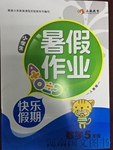题目内容
―It is surprising to see Fredric playing golf. The doctor said he would never get up.
― No secret to me. Chinese acupuncture has cured him _______ his disease.
A. off B. from
C. away from D. of
D
cure sb. of sth. 是固定搭配,意为“治愈某人的疾病”。

练习册系列答案
 永乾教育寒假作业快乐假期延边人民出版社系列答案
永乾教育寒假作业快乐假期延边人民出版社系列答案
相关题目